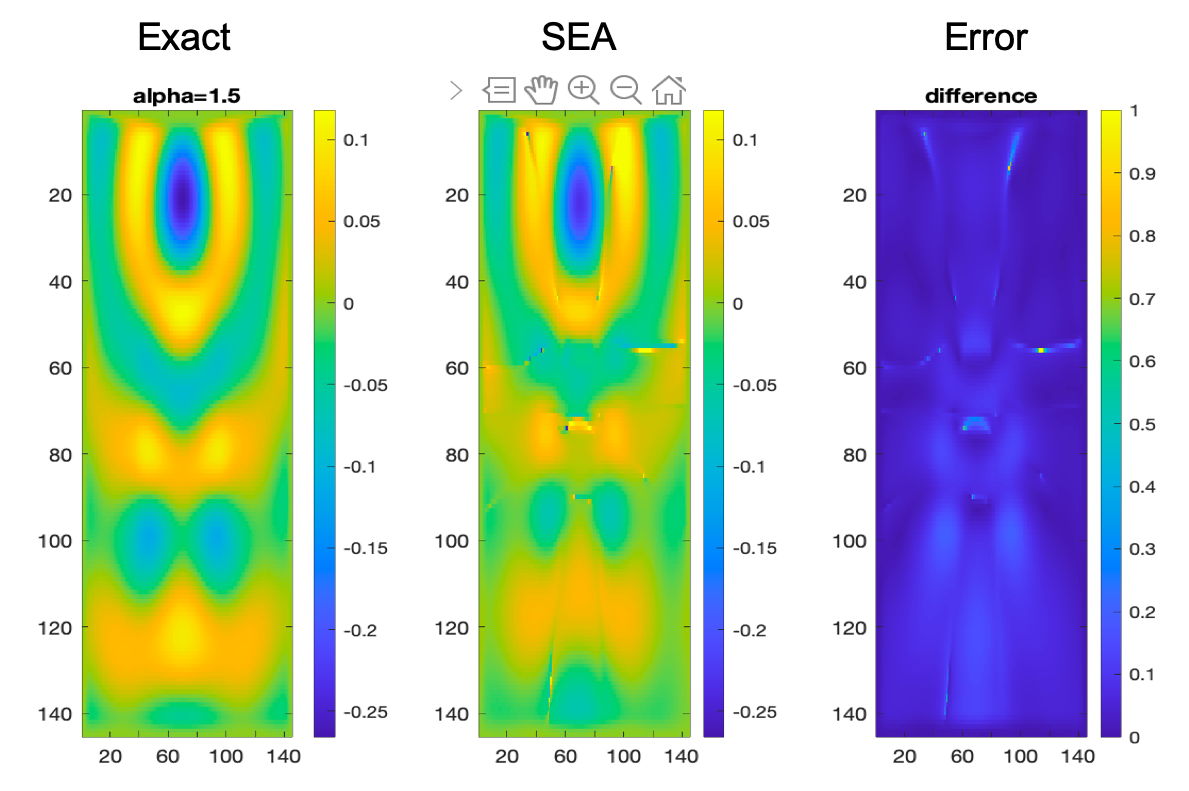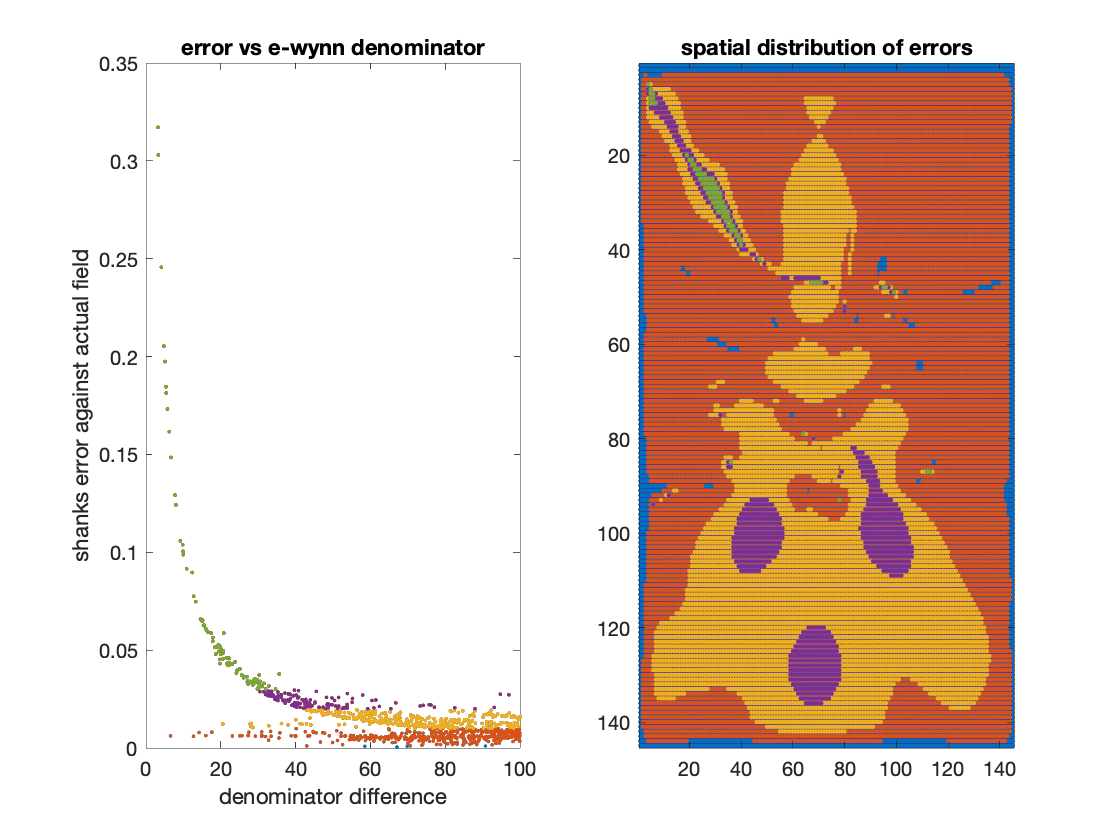The dipole lens example is quite different from the mode convertor. The objective is simple, but it is unbounded. The device is much harder to optimize, as evidenced by the plot of the learning rates in the paper.
In practical situations, the scalar epsilon-wynn algorithm can exhibit numerical stabilities when applied to a vector series. The primary way to combat this is to formally write the epsilon-wynn algorithm for a vector series, motivating the Vector Epsilon Algorithm (VEA) and the Topological Epsilon Algorithm (TEA)

